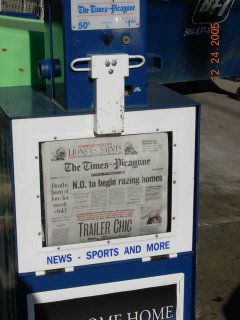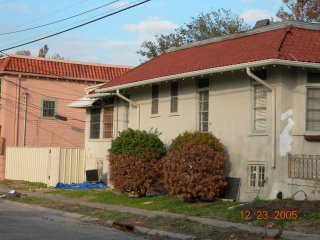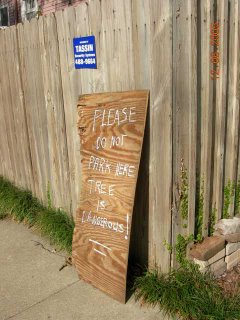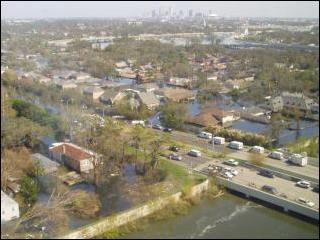The media shows images of the most photogenically and visibly devastated areas. But, its the mile after mile of middle and upper-class neighborhoods which, at first glance, look OK from the outside. After 2 weeks of 8-12 feet of floodwaters, all the furniture, appliances, personal belongings were ruined. The sheet-rock walls, insulation are soaked and covered with mildew. The wall studs are warped and need often need to be replaced. The flooring. The wiring. I could go on. We're talking about 250,000 homes. Some few residents from these neighborhoods have come back already. They are staying with friends and relatives. Very few FEMA trailers have been installed (Not in My Backyard sentiments and lack of electrical and plumbing services.) Also, it is not clear whether these houses will be re-insured and at what rates or if bank loans will be available. Also, it is not reassuring when the government states that it will only rebuild the levees to the pre-Katrina level.
So, when the Mennonites indicate that they will be here working for 2 years, that's not an exaggeration of the time involved.
Meanwhile, my immediate neighborhood wasn't flooded. There was wind damage and you see many houses with blue plastic nailed over roofs. My house is new and is all steel - bolted and welded so I had no wind problems. Happily, debris did not break my huge back window. My problems came from looters - who took less than my deductible but I still hope to get some help to restore my back door - where the breakin took place. The garden is a mess but my bougainvillea flourished. So, comparatively, I have very few problems. True, it is difficult to get help in fixing up. But, just a few minutes ago, I found a fellow who will help me weed the yard and, very expensively, I found someone who will mow 4 months of a supposed lawn.
About half of the businesses in the neighborhood have reopened. The big grocery stores that I go to have limited hours of service - few employees and few clients. It seems like the ethnic restaurants were quicker to return than others and there are lines to get in. But, when college students and professors return and when families with school children come back (very few New Orleans schools have reopened), the population will grow dramatically.
Last night, I spoke to a friend of mine. She's Bolivian, from the Yungas of La Paz, a region I visited for the first time last summer. She's a professor of Spanish at Loyola and her house was flooded. We worked on the first conference of the Bolivian Studies Association in her, once charming, dining room where she treated us to delicious Bolivian specialties. Some cousins are helping her fix up a small apartment in the back of her lot before she undertakes the reconstruction of her house. She sounded exhausted and devastated last night on the phone. I went by today and these two photographs show the level of flood water (note the two lines I superimposed on the image) and the gutted interior. It's overwhelming.












